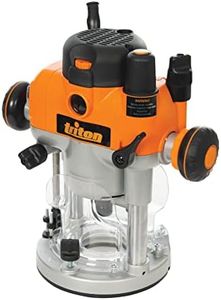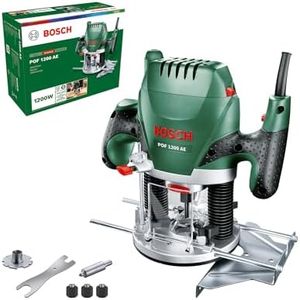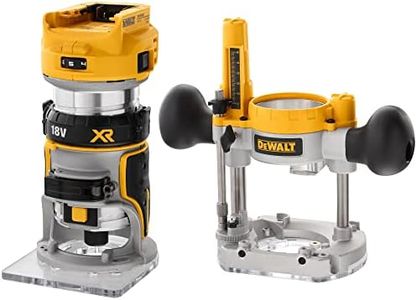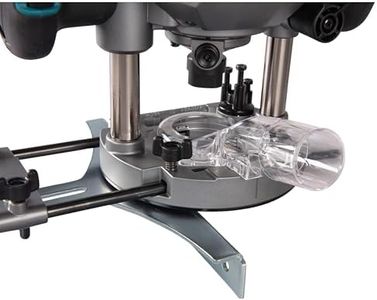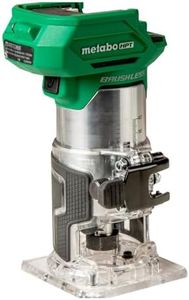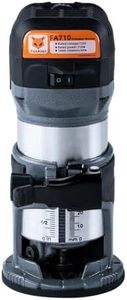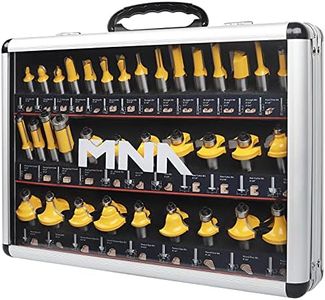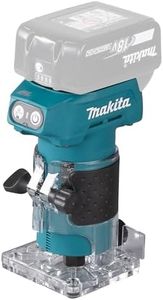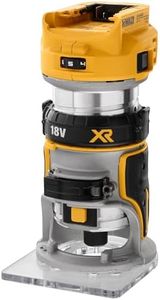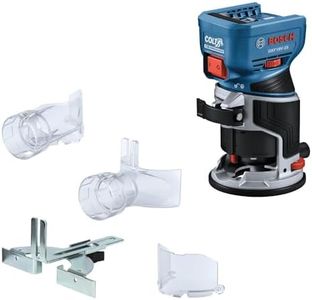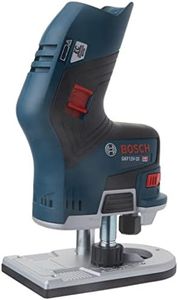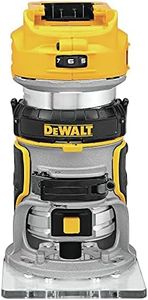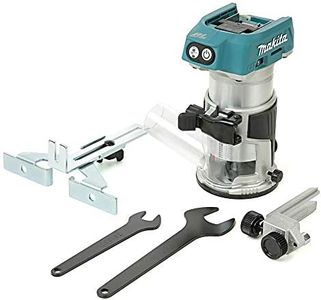We Use CookiesWe use cookies to enhance the security, performance,
functionality and for analytical and promotional activities. By continuing to browse this site you
are agreeing to our privacy policy
10 Best Wood Routers
From leading brands and best sellers available on the web.Buying Guide for the Best Wood Routers
Choosing the right wood router can make a huge difference in your woodworking projects, whether you’re crafting furniture, cabinetry, or decorative pieces. The best approach is to consider what kind of tasks you frequently do and match those needs with a machine that offers the right balance of power, versatility, and ease of use. Think about where you’ll use the router (workshop or job site), what types of wood you work with, and the kinds of cuts you plan to make. Understanding the main features will help you select a router that’s comfortable to handle and meets your project requirements.Router TypeWood routers generally come in two styles: fixed-base and plunge. Fixed-base routers are lighter and easier to control, making them ideal for edge shaping and precision work. Plunge routers allow the bit to move vertically while routing, which is essential for making interior cuts or grooves. Some models offer both bases for added versatility. If you mainly do edge work, a fixed-base is likely sufficient. If you need to start cuts in the middle of workpieces or do more complex joinery, a plunge router is better.
Motor PowerMotor power is usually measured in amps or horsepower and determines how tough a job the router can handle. Lower power (around 1 to 1.5 HP or up to 8 amps) is suitable for light jobs, soft woods, and small bits. Medium power (1.5 to 2 HP, 8–12 amps) works well for most hobbyists, offering a balance for both soft and hardwoods. High power routers (2+ HP, 12+ amps) are best for heavy-duty tasks, thick hardwoods, or large-diameter bits. Choose higher power if you consistently work on challenging materials or big projects; otherwise, a smaller motor may be more comfortable and sufficient.
Collet SizeThe collet size refers to the diameter of the router bits your machine can accept, usually either 1/4-inch or 1/2-inch. 1/4-inch collets use smaller bits, which are less expensive but also less robust. 1/2-inch collets accept larger bits, providing better stability, reduced vibration, and the ability to handle bigger jobs. Some routers come with adapters for both sizes, increasing flexibility. If you anticipate using a wide variety of bit sizes or working on larger projects, pick a router that can handle 1/2-inch bits.
Variable Speed ControlVariable speed lets you adjust how fast the router bit spins. This feature is important because different materials and bit sizes require different speeds for the best results and safety. Lower speeds are better for large bits or harder woods, while higher speeds suit smaller bits and softer woods. If you plan to use various bit sizes or work with a range of woods, variable speed control gives you more versatility and helps prevent burning or damaging your material.
Ergonomics and WeightThe ergonomics and weight of a wood router impact how comfortable it is to use for extended periods. Lighter routers are easier to maneuver, especially for detailed or overhead work. Heavier routers may offer more stability for stationary tasks like table-mounted operations. Pay attention to handle design, balance, and triggering mechanisms—choose a model that feels comfortable and secure in your hands based on how long you'll typically use it during projects.
Depth AdjustmentDepth adjustment refers to how precisely you can set how deep the bit cuts into the wood. Accurate depth control is crucial for tasks like joinery, inlay work, and repeated cuts. Some routers offer micro-adjustment dials or easy-to-read depth gauges for better precision. If your projects demand exactness—such as dovetail joints or decorative grooves—look for a router with fine and easily repeatable depth adjustment.
